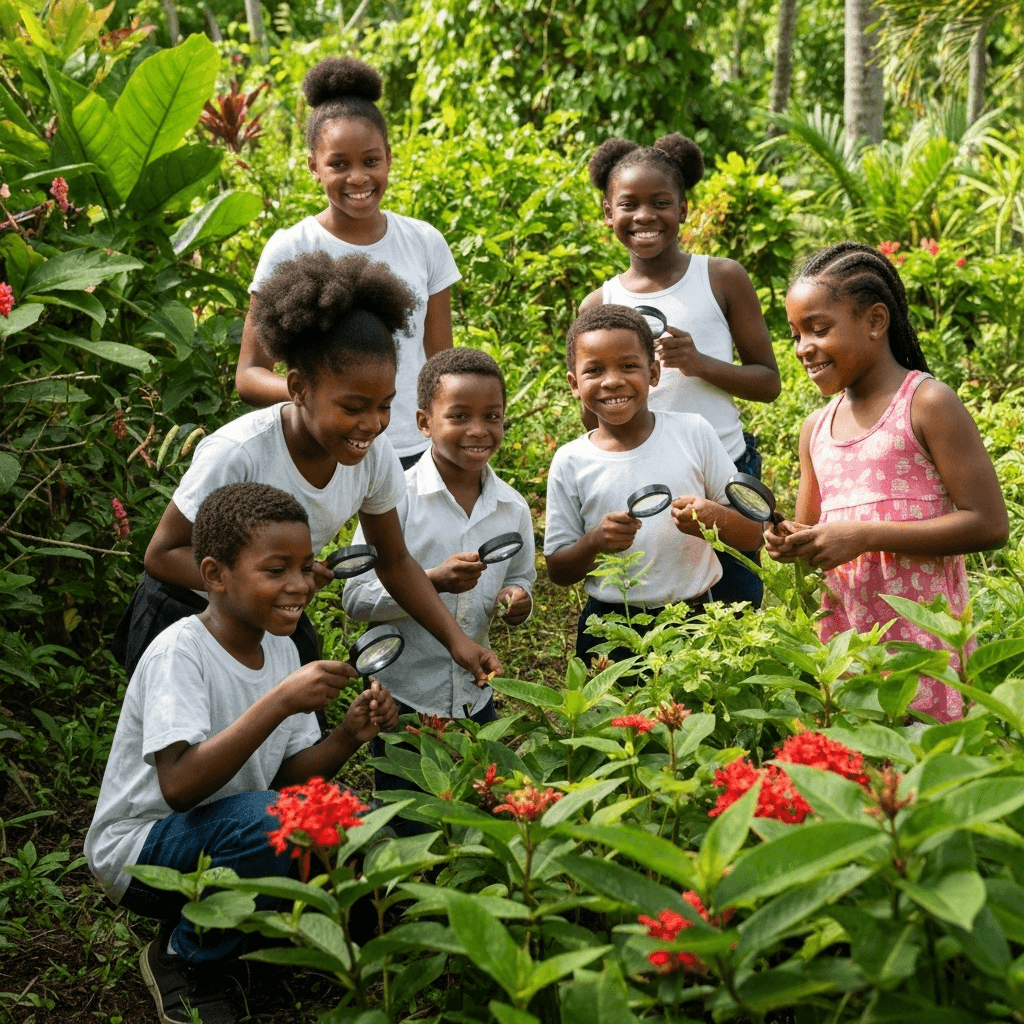Plant Detectives
A hands-on life science investigation where students explore plant parts and their functions through observation, dissection, and scientific documentation.
Activity Overview
Plant Detectives transforms students into scientific investigators as they explore the fascinating world of plants. Through hands-on observation and gentle dissection, students discover the different parts of plants and learn about their important functions. This inquiry-based activity develops scientific thinking skills while building foundational knowledge about plant biology and the natural world.

Learning Outcomes
- Identify and name the basic parts of plants (roots, stem, leaves, flowers)
- Understand the function of each plant part
- Develop observation and investigation skills
- Practice scientific documentation through drawing and writing
- Use scientific tools appropriately (hand lenses, tweezers)
- Build vocabulary related to plant science
- Foster curiosity about the natural world
Curriculum Connections
Life Science: Living and non-living things
- Characteristics of living things
- Basic needs of plants
- Plant parts and their functions
Scientific Inquiry: Observation and investigation
- Making observations using senses and tools
- Recording observations through drawings and words
- Asking questions about the natural world
Implementation Steps
1Preparation (10 minutes)
- Gather various plants and flowers (different sizes and types)
- Set up investigation stations with hand lenses and tweezers
- Prepare paper plates for plant dissection
- Distribute observation journals or recording sheets
- Review safety rules for handling plants and tools
2Introduction and Prediction (10 minutes)
- Show students the plants they will investigate
- Ask: "What parts do you think we'll find inside these plants?"
- Record predictions on chart paper
- Introduce plant part vocabulary: roots, stem, leaves, flowers, seeds
- Demonstrate proper use of hand lenses and tweezers
3Plant Investigation (20-25 minutes)
- Students work in pairs to examine whole plants first
- Use hand lenses to observe details of leaves, stems, and flowers
- Carefully separate plant parts using tweezers
- Arrange parts on paper plates for closer examination
- Look for seeds inside flowers or fruits
- Draw observations in science journals
4Documentation and Discussion (10-15 minutes)
- Students complete their observation drawings
- Label plant parts in their journals
- Write or dictate one sentence about each plant part
- Share discoveries with the class
- Compare findings to original predictions
- Discuss what each plant part does for the plant
5Wrap-up and Extension (5-10 minutes)
- Review the function of each plant part
- Connect plant parts to human body parts (roots like feet, stems like backbone)
- Plan to observe plants in the school yard or at home
- Clean up materials and wash hands
- Display student drawings and observations
Activity Variations
Outdoor Plant Hunt
Take the investigation outside to examine plants in their natural environment and compare different species.
Plant Part Sorting
Create sorting activities where students group different leaves, flowers, or seeds by characteristics.
Plant Art Creation
Use collected plant parts to create nature art while discussing the function of each part used.
Seed Investigation
Focus specifically on seeds - examine different types, predict what plants they'll grow into.
Differentiation Strategies
For Advanced Learners
- Compare plants from different environments (desert, forest, water)
- Research and draw the life cycle of a flowering plant
- Create detailed scientific diagrams with measurements
- Investigate how plant parts are adapted for their functions
For Students Needing Support
- Start with larger, simpler plants with obvious parts
- Provide pre-drawn plant outlines for labeling
- Use picture cards to match plant parts to their names
- Work with a partner or adult helper
- Focus on 2-3 main plant parts instead of all parts
Language Support
- Provide plant part vocabulary cards with pictures
- Use gestures and actions to demonstrate plant functions
- Allow drawing with minimal writing requirements
- Connect to plants from students' home cultures
Assessment Rubric
Plant Part Identification
- Excellent: Identifies all plant parts correctly
- Good: Identifies most plant parts with minimal help
- Developing: Identifies some plant parts with support
- Beginning: Needs significant guidance
Scientific Observation
- Excellent: Makes detailed, accurate observations
- Good: Makes clear observations with some details
- Developing: Makes basic observations
- Beginning: Observations need support and guidance
Tool Use and Safety
- Excellent: Uses tools safely and effectively
- Good: Uses tools appropriately with reminders
- Developing: Uses tools with guidance
- Beginning: Needs constant supervision
Materials and Safety
Essential Materials
- Various plants and flowers (dandelions, daisies, small potted plants)
- Hand lenses (magnifying glasses)
- Tweezers (child-safe)
- Paper plates for dissection
- Observation journals or recording sheets
- Pencils and colored pencils
Safety Considerations
- Check for plant allergies before the activity
- Avoid poisonous or thorny plants
- Supervise use of tweezers and hand lenses
- Wash hands after handling plants
- Dispose of plant materials appropriately
